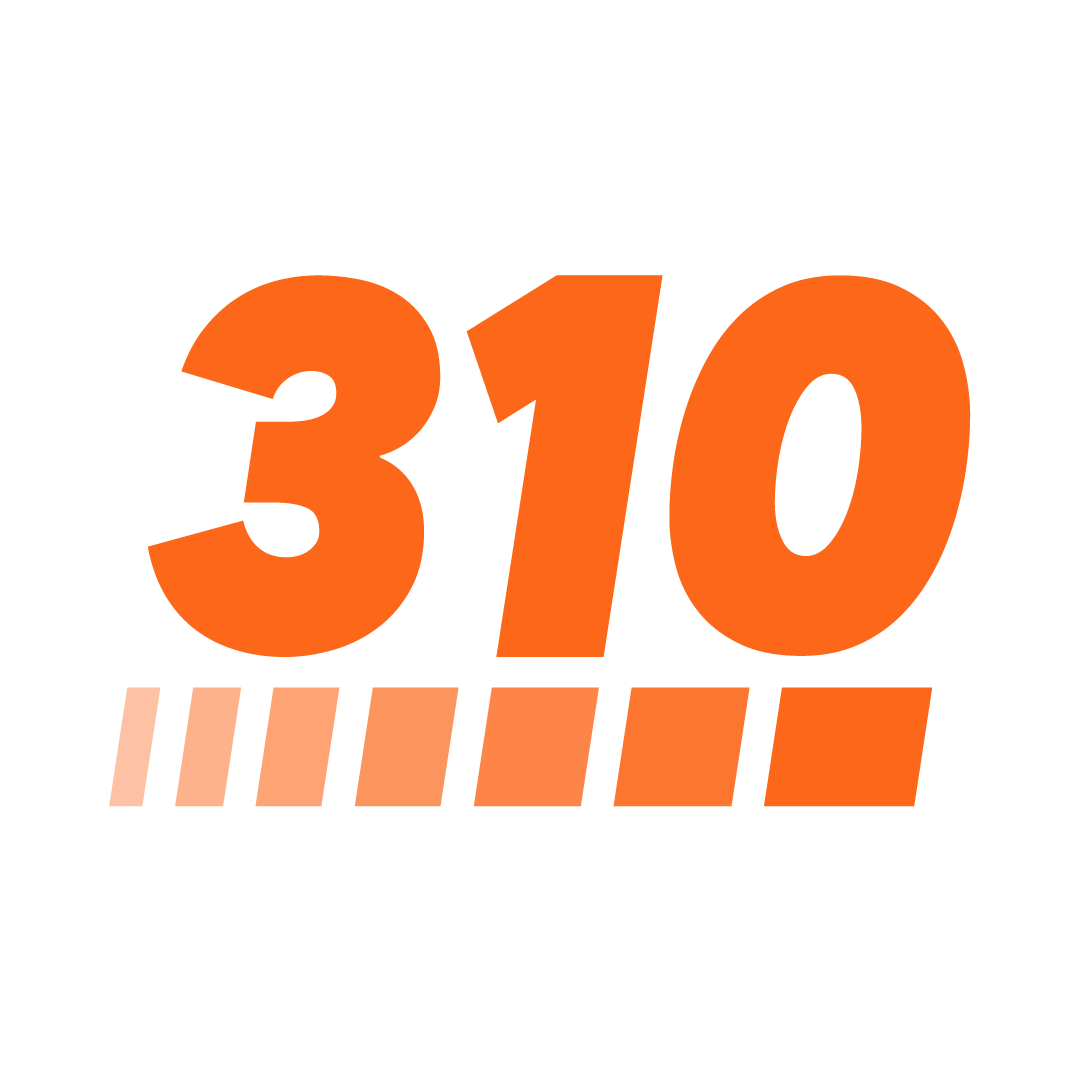Here at 310, we make it a point to regularly gather feedback from the 310 Community, so we can address your pressing concerns on the path to a happier, healthier you. As you strive to eat a healthier diet (with balanced protein, good carbs and fats, vitamins and minerals), many of you have expressed questions about sodium.
You may be wondering if you’re currently eating too much sodium, and how much you should aim for (or try to avoid) in your daily diet?
In this article, we’ll address sodium, answering your concerns and explaining how it fits into the balance of all the foods you eat throughout the day.
After reading it, you’ll be much more informed about this mineral that often gets villainized, and be able to effectively fit the “right” kinds of sodium into your diet, while leaving out the “bad” kinds. Read on to learn more!
What Is Sodium? The Good & The Bad…
Sodium, like sugar, is one of those things that you’re just told you need to avoid. But why exactly is it bad for you and how much sodium is too much sodium?
Sodium is a mineral that, along with potassium, helps maintain a healthy balance in your fluid and blood levels. These minerals also go by the name “electrolytes”. This is because they emit a small electrical charge that activates your body’s cell and nerve functions. (1,2)
Sodium and potassium work closely together but serve opposite functions. Potassium maintains normal fluid levels inside your cells while sodium maintains fluid levels outside your cells. Although you need both for optimal functioning, you need far more potassium than you do sodium. (2)
Sodium vs. Salt - Are They Different?
While sodium is often used interchangeably with salt, they’re actually not the same thing!
Salt, also known as sodium chloride, is a compound that contains about 40% sodium and 60% chloride (hence the name sodium chloride!). It’s most commonly used to flavor or preserve foods since bacteria can’t survive in an environment high in salt. (1)

Daily Sodium + Potassium Intake
Your body needs a small amount of sodium and a high amount of potassium to maintain optimal fluid and blood volume. But too much sodium and too little potassium can cause high blood pressure and heart health complications. (1,3)
That’s why the American Heart Association recommends no more than 2,300 milligrams (mg) of sodium per day. This is a big cut for most Americans who are, on average, consuming more than 3,400 mg of sodium every day. That’s around 1.5 teaspoons daily. (1,4)
This might not seem like a lot, but it’s way more than what your body needs!
And to add to the problem, many Americans aren’t getting enough potassium. Given their interconnected nature, potassium has the exact opposite effect of sodium. While too much sodium can increase your blood pressure, a high amount of potassium can help relax blood vessels and lower your blood pressure. (2)
It’s recommended that women consume more than 2,600 mg of potassium each day and men more than 3,400 mg. The average American consumes around 2,900 mg of potassium. So there’s some room for improvement! (2)
What’s Causing High Levels of Sodium in the American Diet?
Contrary to popular belief, it’s not the salt from your salt shaker that you need to worry about!
70% of all sodium intake comes from eating out or enjoying pre-packed or frozen foods. Pre-packaged, prepared, or frozen foods often rely on sodium to both preserve and provide flavor. And a lot of restaurant foods are much higher in salt than the foods you’d make at home. (3,4)
This means that if you’re enjoying a healthy diet focused on whole foods, you’re not consuming nearly as much sodium as someone who’s regularly eating out or grabbing food from the freezer.

How to Lower Your Sodium Intake
High sodium intake is a problem for the average American. But there are steps you can take to limit your sodium intake!
Limit High-Sodium Foods
The first step is limiting foods that are high in sodium.
These include: (5)
- Canned foods like tuna, soups, sauces, or canned veggies
- Smoked, cured, or salted meats like bacon, deli slices, sausage, or ham
- Pickled vegetables like pickles, sauerkraut, or olives
- Frozen meals like macaroni & cheese or pizza
- Bread or rolls
- Salted snacks like nuts, chips, or pretzels
- Pre-packaged mixes like stuffing, potatoes, rice, ramen, or pasta
- Soy sauce, marinades, salad dressings
- Some dairy products like cheese or butter
Choose Whole Foods Over Pre-packaged
When shopping for these items, look for low-salt options whenever possible. Or swap the above foods with whole food options instead like fresh veggies vs. canned or homemade soup instead of store-bought.
By loading up on nutritious whole foods like fruits, vegetables, whole grains, and lean meats instead of the pre-packaged or canned alternatives you’ll drastically decrease your sodium intake.

Check the Nutrition Label...
But how do you know which foods are high in sodium? Take a peek at the sodium levels on the nutrition label! The sodium per serving includes all sodium found in the food such as salt, sodium nitrate, sodium citrate, monosodium glutamate (MSG), or sodium benzoate. (4)
Items with 400 mg or more of sodium are high in sodium while items with less than 140 mg of sodium are low in sodium. But make sure you’re considering serving size! (4,5)
For example, at first glance, the frozen macaroni and cheese meal below looks like it has 590 mg of sodium. But when you look at the serving size, it’s set to two. So if you plan on eating the whole meal, that’s 1,180 mg of sodium you’re consuming. That’s half your daily limit of sodium in one sitting!

Image credit: Freezer Meal Frenzy
Watch Out for Misleading Labels!
It’s important to look at the back nutrition label because you can’t always trust what’s on the front of the packaging! Just because a product advertises itself as “reduced sodium” doesn’t necessarily mean that it’s low in sodium.
This is what those marketing terms really mean: (4)
- Salt or Sodium-Free: Contains less than 5 mg of sodium per serving
- Very Low Sodium: Contains 35 mg or less per serving
- Low Sodium: Contains 140 mg or less per serving
- Reduced Sodium: This item has at least 25% less sodium than usual (but could still be high in sodium!)
- No-Salt-Added or Unsalted: This means that no salt is added during processing. But check the nutrition label because that doesn’t always mean it’s 100% salt-free!
Dining Out? Read This First
There’s nothing wrong with enjoying the experience of having some meals away from home! After all, dining out is a great break from cooking and can also be a chance to catch up with friends over cocktails and appetizers.
But, unlike the foods you buy at the store, there’s no nutrition label you can check while dining out. And a lot of foods prepared at a restaurant use far more salt than you would use at home. (That’s what makes those fries, mashed potatoes, pasta, or chicken taste so good!)
So if you’re looking to limit your sodium intake, enjoy these nights out as a special treat rather than a regular occurrence. By limiting how often you eat out, you’re limiting your sodium intake. And when you do eat out, check out our blog for help making healthy choices while dining out.
Eat More Foods High in Potassium
A diet high in potassium can help offset high levels of sodium.
So as you’re limiting your sodium intake, aim to increase your potassium intake with these high-potassium foods: (2)
- Fresh fruits and vegetables (like bananas, leafy greens, broccoliquash, avocado, oranges, and tomatoes)
- Beans, lentils, and legumes
- Dried fruits (raisins, apricots)
- Dairy and plant-milk alternatives (like soy or almond milk)
- Nuts (like cashews and almonds)
- Chicken
- Salmon

What About Meal Replacement Shakes?
In looking to lower your sodium intake, you might be wondering about your protein powder or meal replacement shake. Are the sodium levels normal or too high? And is it a problem?
The answer: it depends on the shake and it depends on your diet!
Meal replacement shakes range from less than 100mg to over 500mg of sodium per serving. Whey protein shakes tend to be lower in sodium while plant-based protein shakes, especially those with pea protein, then to be higher.
Our 310 All-In-One Shake, for example, contains 270-320 mg of sodium depending on the flavor. If you’re enjoying two shakes a day that’s 480-640 mg of sodium, which is only 20-27% of your recommended daily sodium intake.
When considering levels of sodium in your shake it’s important to look at your entire day as a whole. If you’re regularly eating out, enjoying processed and pre-packaged foods, and consuming a lot of salty snacks then adding a meal replacement shake on top of all that could tip the sodium scales.
But here at 310, we encourage a whole-food-based diet that has little naturally occurring sodium. For example, fruits and vegetables, which we suggest adding to your 310 shakes, have little to no sodium and are also high in potassium!
So if you’re pairing your meal replacement shake with a healthy, whole food diet then there’s less of a concern that the sodium in your shake is going to put you overboard. Especially if you’re replacing a high-sodium frozen meal like macaroni & cheese or pizza with a 310 Shake instead.
Of course, always check with your doctor before starting any new diet or supplement regimen. They will be able to best advise what is right for your health needs!
Why Does Pea Protein Powder Have Higher Levels of Sodium?
Peas are naturally high in sodium! Especially green peas which contain 31.8 mg of sodium per 100 grams. But the sodium in your pea protein powder primarily comes from the protein extraction process. This involves soaking the peas in a salt solution. A lot of the sodium from the salt solution sticks with the powder, increasing the sodium content. (6,7)
But “high” is a relative term, especially when you consider that one teaspoon of salt contains 2,325 mg of sodium vs. one scoop of 310 Shakes which contains around 270 mg. While pea protein is higher in sodium than other proteins, it’s not an overwhelming amount of sodium that you’re adding to your diet. (8)
There are also plenty of benefits to pea protein that make it a popular choice despite the extra sodium. Pea protein contains all nine essential amino acids. It's also a great source of branched-chain amino acids, which help promote weight loss, healthy blood flow, heart health, and muscle growth. And compared to whey or other milk-based protein sources, it’s a lot easier to digest. (9)
In other words, unless you’re consuming a ton of pea protein powder—aka far more than the recommended one or two shakes a day!—the sodium levels are not something you need to be terribly concerned about.
Your Sodium Takeaway
So what’s the takeaway? A healthy, whole-food diet is the best way to manage your sodium intake! And 310 can be a helpful tool to replace those high-sodium frozen, processed, restaurant, or take-out foods with a healthier solution.
For more healthy-eating tips and suggestions head to our blog. And join our Facebook community to let us know how your health & weight loss journey is going!
Sources:
- https://www.hsph.harvard.edu/nutritionsource/salt-and-sodium/
- https://www.hsph.harvard.edu/nutritionsource/potassium/
- https://www.cdc.gov/salt/potassium.htm
- https://www.heart.org/en/healthy-living/healthy-eating/eat-smart/sodium/how-much-sodium-should-i-eat-per-day
- https://www.ucsfhealth.org/education/guidelines-for-a-low-sodium-diet
- https://pubmed.ncbi.nlm.nih.gov/3632221/
- https://www.folona.com/blogs/blogs/why-is-pea-protein-outrageously-high-in-sodium
- https://www.mayoclinic.org/healthy-lifestyle/nutrition-and-healthy-eating/in-depth/sodium/art-20045479
- https://www.healthline.com/nutrition/pea-protein-powder#intro








